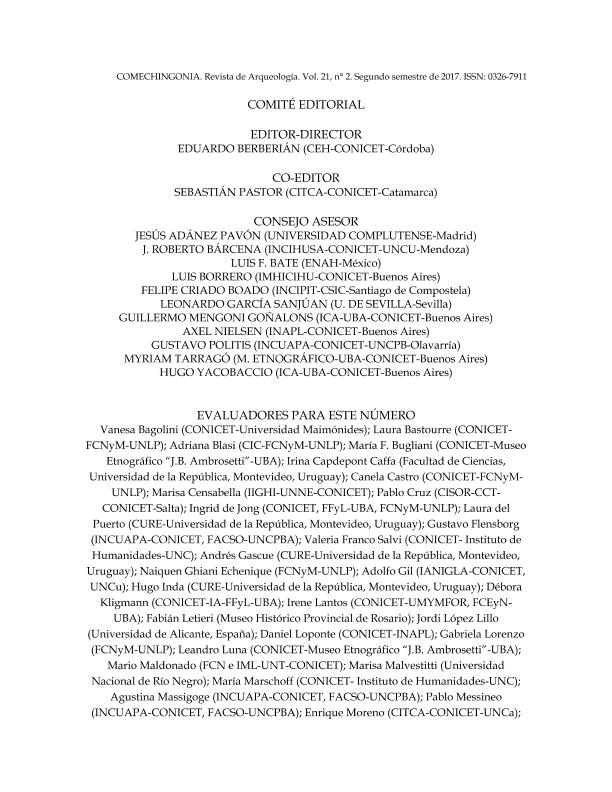Artículo
A partir del análisis de los restos óseos de fauna en sitios históricos se pueden indagar diferentes temas de investigación relacionadas con la alimentación, como etnicidad, interacción entre poblaciones nativas e inmigrantes y agencia. El objetivo de este trabajo es presentar las inferencias realizadas en cuatro sitios arqueológicos de la ciudad de Rosario, correspondientes a los siglos XVIII y XIX: Casa Parroquial, Juan Manuel de Rosas, La Basurita y Arenales. La particularidad de los mismos radica en que corresponden cronológicamente con la masiva llegada de inmigrantes hacia mediados del siglo XIX y el consiguiente crecimiento de la ciudad con el pasaje de los siglos. La hipótesis es que estos cambios se reflejaron en el registro arqueológico, tanto en las especies preferidas para el consumo como en las formas de prepararlos. Si bien la evidencia no es concluyente, ya que se deben atender a otros factores, algunas inferencias como la mayor presencia de consumo de ovejas por sobre el de vacas para el final del período, la diversificación de los tipos de platos preparados, nos hablan de la interacción entre pobladores de distintos orígenes que puede haber permitido una síntesis de pautas alimentarias. From the analysis of the bone remains of fauna in historical sites can investigate different research topics related to food, such as ethnicity, interaction between native and immigrant populations and agency. The objective of this work is to present the inferences made in four archaeological sites of the city of Rosario, between the eighteenth and nineteenth centuries: Casa Parroquial, Juan Manuel de Rosas, La Basurita and Arenales. Their peculiarity lies in that they chronologically correspond with the massive arrival of immigrants in the mid-nineteenth century and the consequent growth of the city with the passing of the centuries. The hypothesis is that these changes are reflected in the archaeological record, both in the species preferred for consumption and in the ways of preparing them. Although this hypothesis could not be verified in a linear way, since other factors must be taken into account some results, such as the greater presence of consumption of sheep over that of cows by the end of the period, the diversification of the types of dishes prepared, tell us about the interaction between people of different origins that may have allowed a synthesis of dietary patterns.
Marcadores de etnicidad y agencia en las pautas alimenticias: Su abordaje desde la Zooarqueología Histórica
Fecha de publicación:
08/2018
Editorial:
Centro de estudios historicos "Prof. Carlos Segreti"
Revista:
Comechingonia
ISSN:
0326-7911
e-ISSN:
2250-7728
Idioma:
Español
Tipo de recurso:
Artículo publicado
Clasificación temática:
Resumen
Palabras clave:
Alimentación
,
Consumo
,
Inmigración
,
Rosario
Archivos asociados
Licencia
Identificadores
Colecciones
Articulos (ISHIR)
Articulos de INVESTIGACIONES SOCIO-HISTORICAS REGIONALES
Articulos de INVESTIGACIONES SOCIO-HISTORICAS REGIONALES
Articulos(CADIC)
Articulos de CENTRO AUSTRAL DE INVESTIGACIONES CIENTIFICAS
Articulos de CENTRO AUSTRAL DE INVESTIGACIONES CIENTIFICAS
Citación
Colasurdo, María Belén; Marcadores de etnicidad y agencia en las pautas alimenticias: Su abordaje
desde la Zooarqueología Histórica; Centro de estudios historicos "Prof. Carlos Segreti"; Comechingonia; 21; 2; 8-2018; 255-273
Compartir




